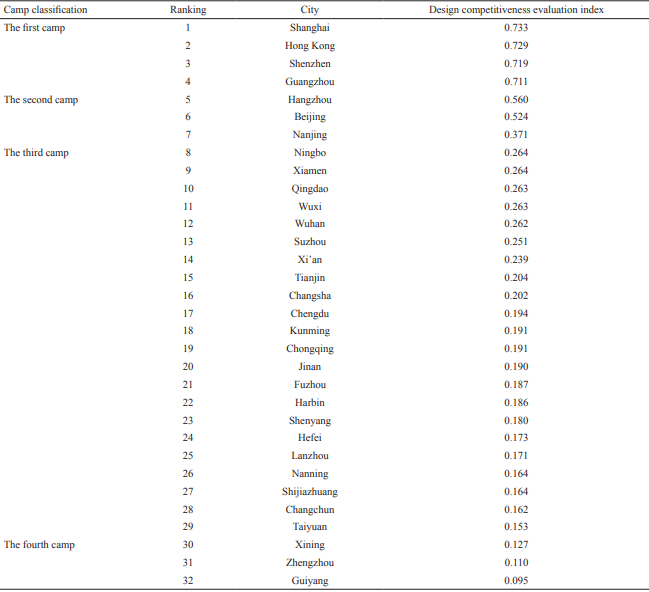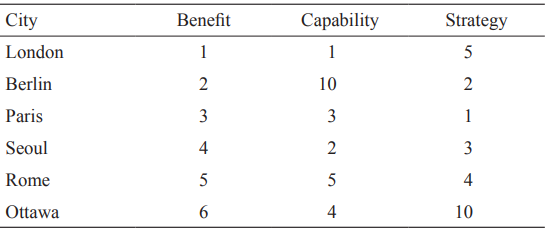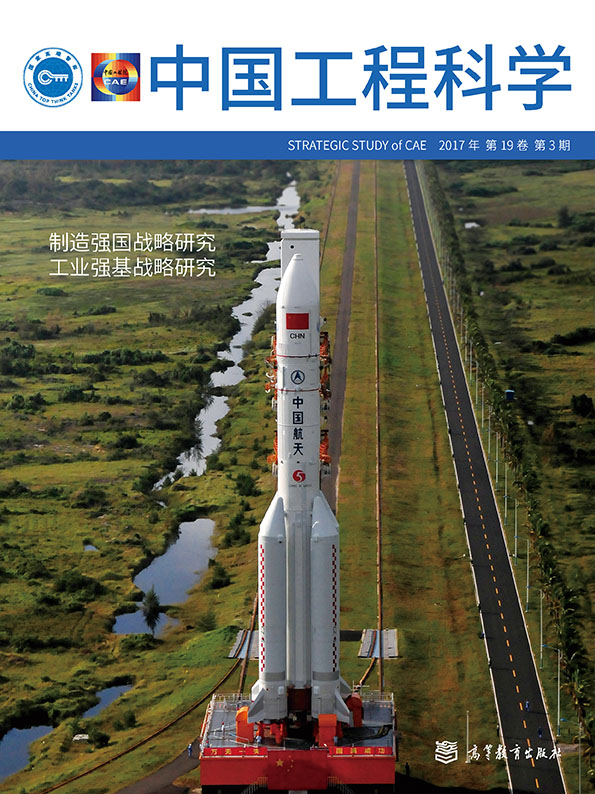《1 Introduction》
1 Introduction
The global economy is driven by innovation, and innovative design is playing an increasingly prominent role in promoting the core competitiveness of countries and cities. Subsequently, in 2015, the Chinese Academy of Engineering launched a consulting project, “Research on Design Competitiveness.” A number of academics and experts from colleges, universities, research institutions, and key enterprises were involved, and the project was undertaken at three levels, including enterprises, cities, and countries. As a sub-project, this study focuses on urban design competitiveness. We analyzed various factors affecting innovative urban design capabilities and their mechanisms and, finally, we constructed a comprehensive evaluation index system to reflect the level of urban design competitiveness. These achievements could help the Chinese government to develop a strategy for stimulating the vitality of cities over the longer term.
Research on urban design competitiveness is a new subject, and most of its related achievements are focused on the evaluation of creative industries and the creative ability of cities. In 2002, Professor Florida at Carnegie Mellon University put forward the 3TS theory [1]. He focused on the impact of a city’s creative ability on regional economic growth and output, which is promoted from three aspects: talent, technology, and tolerance. Based on this, a creative index evaluation system was built to evaluate the main urban areas in the United States. The European Creative Index (ECI), the Global Creative Index (GEI), and the Composite Index of Creative Economy (CICE) are also derived from the 3TS theory.
Most domestic Chinese research has focused on the creative index, including the Chinese City Creative Index (CCCI) [2], the Shanghai City Creative Index [3], and the Hong Kong Creative Index (HKCI) [4]. The CCCI is a new evaluation model for cultural development based on Porter’s diamond model and system theory. The Shanghai creativity index focuses on the assessment of local creativity and innovation capability. The HKCI developed a 5C model based on the 3TS theory, which reflected the economic development and innovation capability of Hong Kong.
《2 The evaluation system of urban design competitiveness》
2 The evaluation system of urban design competitiveness
《2.1 The definition and content of urban design competitiveness》
2.1 The definition and content of urban design competitiveness
The design competitiveness of a city should be a comprehensive reflection of its innovative design capabilities. Innovation design should feature low carbon emissions, networks, intelligence, and sharing [5]. They should integrate science, technology, culture, art, and service, and cover engineering design, industrial design, service design, and other types of design fields [6]. It is the foundation of urban development.
《2.2 An analysis of influencing factors》
2.2 An analysis of influencing factors
According to previous analyses, the indexes that measure urban design competitiveness can be summarized according to three features. The first is the basic condition for carrying out various innovative design activities in an urban area. The second is the benefit of innovative design activities, and the third is the sustainability of innovative design activities.
2.2.1 Basic conditions
These include the geographical location of the city [7], its history and culture, design culture, industrial environment and resources, and its advanced technological resources [8].
2.2.2 Benefits
The benefits can be analyzed according to two aspects: one is the economic output, including direct economic output created by creative industries and design-related industries, and the other is indirect economic output driven by innovative design in other industries. The second concerns the residents, including the income of the staff engaged in innovative design, the number of related jobs, and the quality of the living environment created by innovative design [8].
2.2.3 Sustainability
Sustainability is an important manifestation of the city’s strategic planning for innovative design and development. In summary, it has three features: first, the city’s policy support for innovative design activities and related industries; second, the city’s financial support for the development of innovative design industry and innovative design activities; and third, the introduction of various types of innovative design talents [8].
《2.3 Index extraction》
2.3 Index extraction
The comprehensive index system was constructed through the analysis of influencing factors, selection of index pool, optimization of expert interviews, establishment of the index system, pre-assessment, revision, and re-evaluation. The first-level indicators of urban design competitiveness were divided into three categories: a benefit indicator, a design capability indicator, and a design strategy indicator. The benefit indicator includes two second-level indicators, including R&D achievements and new products. The design capability indicator includes four second-level indicators, including design education, design and R&D investment, design techniques and tools, and energy conservation and emission reduction. The design strategy indicator includes two second-level indicators: policy support and design culture. Under this framework, there were 25 detailed third-level indicators.
2.3.1 Benefit indicator
The benefit indicator consists of six third-level indicators: the proportion of the added value of the city to the added value of the country in the field of design [9], the number of international design patents authorized for the added value of the city’s unit manufacturing industry, the proportion of the revenue of famous manufacturing brands of the city to the revenue of famous manufacturing brands of the country, the domestic market share of new products, the operating efficiency of the new product business model, and the new product quality and customer satisfaction. The benefit indicator accounts for 35 % of the overall indicator system, while the six third-level indicators each account for the same proportion of 5.83%. (Table 1).
《Table 1》
Table 1. The benefit indicator.

2.3.2 Design capability indicator
The design capability indicator consists of ten third-level indicators: the growth rate of practitioners in the field of design, the proportion of designers to the employees in the design area, R&D input intensity in the design industry, the growth rate of private investment in the field of design, the growth rate of longterm bank loans in the field of design, income growth of design research, development, incubation platforms, the popularity rate of digital design tools, the penetration rate of advanced design technology, the priority rate of energy conservation in design parks, and the priority rate of emission reduction in design parks. The design capability indicator accounts for 45 % of the overall indicator system, while the ten third-level indicators each account for the same proportion of 4.50% (Table 2).
《Table 2》
Table 2. The design capability indicator

2.3.3 Design strategy indicator
The design strategy indicator consists of nine third-level indicators, including the municipal strategic support (platforms, parks, and exhibitions) for innovative design,tax rebate growth,the amount of special support funds,the growth of financial subsidies,support for big data, internet plus, cloud computing, and other technologies,the unique industrial innovation culture level,the innovation and entrepreneurship level, design safety awareness,and design atmosphere and creative design social recognition. The design strategy indicator accounts for 20 % of the overall indicator system (Table 3).
《Table 3》
Table 3. The design strategy indicator.

《3 The evaluation of urban design competitiveness of the sample cities》
3 The evaluation of urban design competitiveness of the sample cities
The project selected 32 typical domestic cities and 18 foreign cities represented by the central cities of G20 countries. The 32 domestic cities included port cities and inland cities according to location characteristics, and covered key cities along the Belt and Road (B&R) [the Silk Road Economic Belt and the 21st-Century Maritime Silk Road]. The cities selected were comparable with each other and representative of profound historical and cultural heritage. The eighteen foreign cities were influential international metropolises. They were the economic, political, and cultural centers of all the countries examined and the development level and regional characteristics of all of the cities were quite different.
《3.1 The review of the evaluation of urban design competitiveness in China》
3.1 The review of the evaluation of urban design competitiveness in China
Using the data of 2015 as an example, a quantitative analysis of 32 cities in China was carried out. The results are illustrated in Table 4. The ranking reflects the distribution of “camps” of urban design competitiveness: Shanghai, Hong Kong, Shenzhen, and Guangzhou occupy the first camp, while Hangzhou, Beijing,and Nanjing occupy the second. The western cities are slightly weaker.
《Table 4》
Table 4. The ranking of 32 domestic cities.

《3.2 The review of the evaluation of urban design competitiveness abroad》
3.2 The review of the evaluation of urban design competitiveness abroad
Using the data of 2015 as an example, a quantitative analysis of 18 foreign cities was carried out, and the results are illustrated in Table 5. London, Paris, Seoul, and Rome are in the first camp; Ottawa, Mexico City, Berlin, and other cities followed in the second and subsequent camps.
《Table 5》
Table 5. The ranking of 18 foreign cities

《4 The development model of urban design competitiveness》
4 The development model of urban design competitiveness
The indicator system of urban design competitiveness has 25 third-level indicators. Through cluster analysis, the research summarized the advantages and disadvantages of different indicators in the sample cities.
《4.1 The development model of domestic cities》
4.1 The development model of domestic cities
The results demonstrated that Hong Kong, Beijing, Guangzhou, Shanghai, Shenzhen, and Hangzhou are outstanding on benefit-driven performance (Table 6).
《Table 6》
Table 6. The ranking of the top five cities

Hong Kong, Shanghai, Shenzhen, Guangzhou, Hangzhou, and Beijing are driven by design capability.
Shenzhen, Shanghai, Guangzhou, Hangzhou, Hong Kong, Ningbo, Beijing, Nanjing, Chongqing, Hefei, Chengdu, Xi’an, Wuxi, and Suzhou are driven by design strategy.
Hong Kong, Shanghai, Shenzhen, Guangzhou, and Hangzhou perform well in all criteria.
《4.2 The development model of foreign cities》
4.2 The development model of foreign cities
In terms of the first-level indicators, London, Paris, Seoul, Rome, and Moscow have similar development models with balanced benefits, design capabilities, and design strategies. Ottawa and Mexico City are slightly weaker on design strategy. New York, Tokyo, and Sydney are weaker on benefit performance (Table 7).
《Table 7》
Table 7. The ranking of foreign cities.

《4.3 Suggestions to improve the urban design competitiveness in China》
4.3 Suggestions to improve the urban design competitiveness in China
To improve the urban design competitiveness in China, first, the government needs to pay attention to long-term planning and formulate a long-term and viable development strategy. Second, the development of an innovative design industry should be provided with strong support, such as funds and investment resources. The government must pay more attention to the development of cultural and creative industries. Third, domestic cities still need to increase the training and introduction of design talents. Finally, the protection of intellectual property rights must be supported. A good intellectual property protection system is the premise for creative industry development. The relevant laws and regulations of the protection of intellectual property rights need to be further refined.
《5 Conclusions》
5 Conclusions
At present, China is in an important era, moving from factor-driven development to an innovation-driven development stage. The dominance of innovative design has become increasingly apparent. For the development of Chinese cities, innovative design makes it possible for everyone to stand on the same starting line again. The study further encourages the government to plan urban development strategies from a more comprehensive and longer-term perspective, build urban characteristics, stimulate urban vitality, enhance the image of cities, and promote comprehensive and healthy development.
《Acknowledgments》
Acknowledgments
We thank relevant experts such as Zhang Yanmin, Lou Yongqi, Han Ting, and Liu Xihui from the major consulting projects of the Chinese Academy of Engineering for their support. Some of the opinions in this paper were drawn from their contribution.














 京公网安备 11010502051620号
京公网安备 11010502051620号




